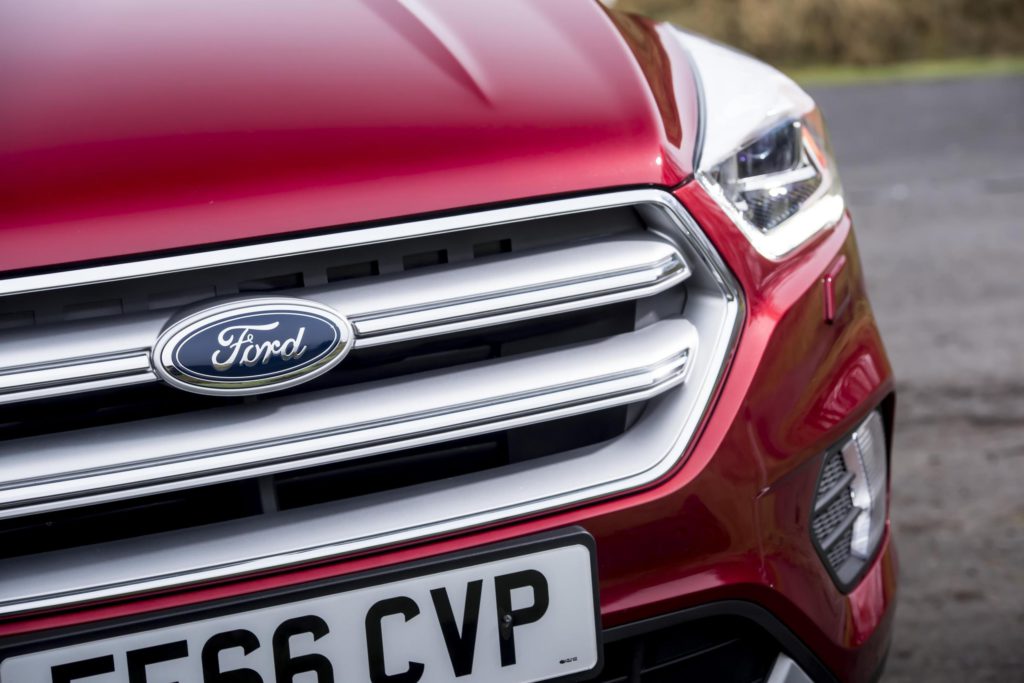Ford relying on hybrid for CO2 targets
23 April 2019

23 April 2019
New hybrid and plug-in hybrid (PHEV) technology will allow Ford of Europe to meet strict CO2 targets, the company has said.
Rather than focusing efforts on electric vehicles (EVs), Ford’s plan will see its fleet of hybrid-driven products bring down its average CO2 levels. The carmaker recently announced its new Kuga model would feature a PHEV option with impressive emissions figures.
The hybrid offensive will see a special focus on PHEV models, with the Kuga SUV leading the charge. At the recent ′Go Further’ event held by Ford, which highlighted the carmaker’s future strategy, the Kuga was shown with CO2 emissions of 29g/km. This is closer to figures for a midsize vehicle such as a Toyota Prius, rather than for a similar size SUV, which emits on average around 49g/km.
Under an EU credit system favouring plug-in vehicles, any car emitting less than 50g/km of CO2 will count as two vehicles in 2020, 1.67 vehicles in 2021, 1.33 in 2022 and one by 2023.
Strict targets
By 2021, all carmakers have to bring their average fleet emissions down to 95g/km or risk financial penalties. While this was an achievable target until a few years ago, the collapse of the diesel market, together with the introduction of the WLTP emissions regime, has pushed manufacturers’ figures upwards. Daimler recently highlighted the trouble it was facing as a result. The European Commission has set a fine of €95 per gram of CO2 over the limit, multiplied by the number of cars sold in 2020 and 2021.
This new trend has meant companies are investing heavily in EV and hybrid technology as a result, adding further financial burdens.
Efficient tech
For the new Kuga, Ford has chosen a large-displacement engine of 2.5-litres, turning to the Atkinson cycle, a similar route to that taken by Toyota with its Prius PHEV. Other carmakers are favouring traditional petrol engines coupled to hybrid energy systems.
′Plug-in hybrid is a very expensive technology, so it makes sense on heavier, bigger, higher-CO2 vehicles where it does more for CO2 reduction and the premium is not as big as small cars,’
The Kuga is part of a Ford plug-in hybrid offensive in Europe that also includes plug-in hybrid versions of the Explorer large crossover and the Tourneo Custom van.
′Plug-in hybrid is a very expensive technology, so it makes sense on heavier, bigger, higher-CO2 vehicles where it does more for CO2 reduction and the premium is not as big as small cars,’ Roelant de Waard, Ford of Europe’s head of sales and marketing, told Automotive News Europe. ′The Kuga is the smallest, but still a pretty sizable vehicle.’
Ford will also offer mild hybrids and hybrid variants on more mainstream models such as the Fiesta sub-compact and Focus compact cars. Ford already sells full hybrid versions of its Mondeo sedan and station wagon.
Ford believes that 40% of Kuga sales will be electrified from the time the new model comes onto the market. With the efficient engine strategy the company is taking, Ford also feels that it will only need to sell a small number of EVs to comply with 2021 and future EU CO2 targets.
The company has been in talks with Volkswagen for some time regarding the potential of sharing the German manufacturer’s MEB electric platform, following on from a collaboration in the commercial vehicle market. It has been preparing for an electrification programme for some time, moving money from traditional engine development into new technology pursuits.